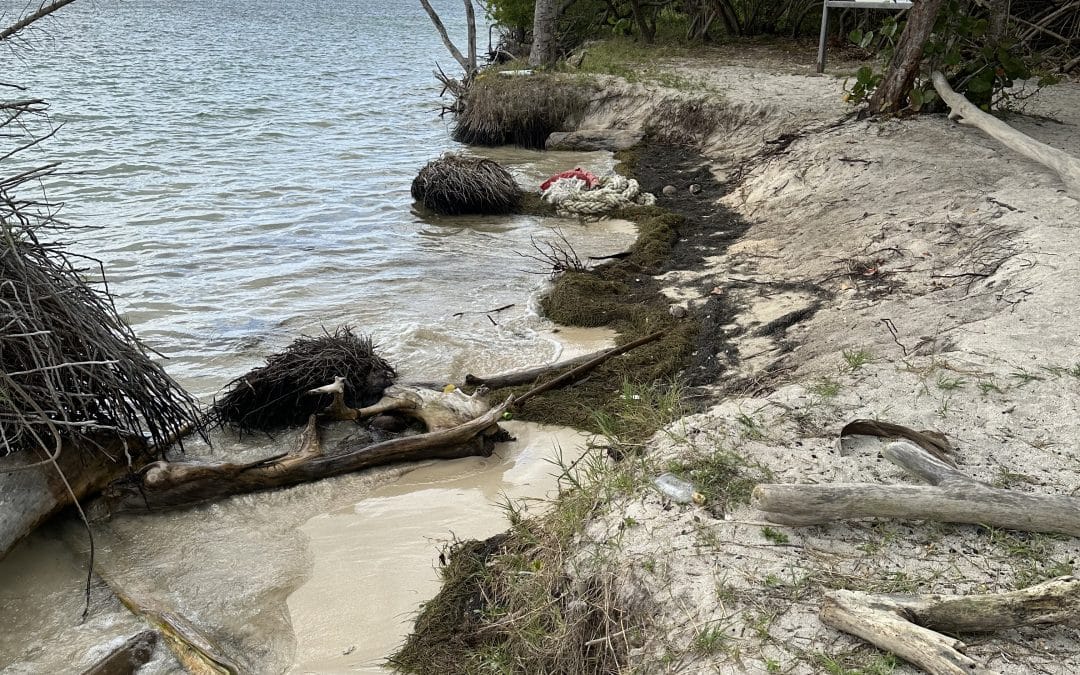We went to Îlet Cochon with the aim of identifying future sites for mangrove reforestation, and we were able to observe some degradation due to climate change, such as coastal erosion.
Coastal erosion is a phenomenon characterized by the retreat of the coastline: it is the movement of the boundary between the marine and continental environments inland, due to the departure of materials (sand, rocks, sediments).
This retreat phenomenon is accelerating due in particular to the gradual rise in sea levels, the effect of human interventions, and the increasing frequencies and intensities of extreme weather events.
Although erosion occurs over a long period of time, it is an inevitable phenomenon (retreat, accretion) that can experience abrupt episodes depending on the location.
How can we combat this phenomenon?
One of the natural solutions to attenuate waves is the root structure of mangroves, which grow in coastal colonies and must withstand the constant action of waves. The dense root structure effectively absorbs wave energy, reducing coastal erosion while allowing water to pass through.
Guadeloupe ranks highest among the overseas departments most affected by the phenomenon. In its report on the challenges related to coastal retreat, the Center for Studies and Expertise on Risks, Mobility, and Development (Cerema) estimated that in Guadeloupe, 87 various activity buildings and 11 housing units would be threatened within five years.

